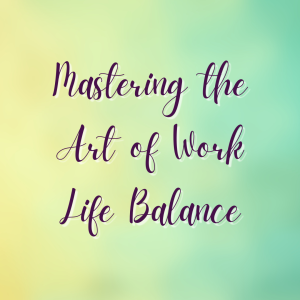 In the fast-paced world of professional commitments and personal responsibilities, achieving a harmonious work-life balance has become an elusive goal for many. As a stress management and well-being coach, I understand the challenges individuals face in juggling demanding careers and personal lives. In this guide, we will explore practical strategies to help you strike a healthy work-life balance, preventing burnout and promoting overall well-being.
In the fast-paced world of professional commitments and personal responsibilities, achieving a harmonious work-life balance has become an elusive goal for many. As a stress management and well-being coach, I understand the challenges individuals face in juggling demanding careers and personal lives. In this guide, we will explore practical strategies to help you strike a healthy work-life balance, preventing burnout and promoting overall well-being.
Set Clear Boundaries
Establishing clear boundaries between work and personal life is crucial. Define specific working hours and resist the temptation to bring work home. Communicate these boundaries to colleagues, friends, and family, helping them understand and respect your designated time for relaxation and personal pursuits. If you absolutely must work outside of hours then make sure it is only for a defined amount of time or you will start to feel the effects of burnout. Everyone needs some time to rest and recuperate. the body is not designed for full-on all the time.
Prioritise Self-Care to Achieve Balance
Make self-care a non-negotiable part of your routine. Schedule regular breaks throughout the day, and engage in activities that rejuvenate your mind and body. Whether it’s a short walk, meditation, or a hobby you enjoy, these moments of self-care are vital for maintaining balance and preventing stress from accumulating. I am looking forward to completely disconnecting until 8th January. I have planned a craft day, meeting friends for coffee in the local village, having everyone around for Christmas Day and Boxing Day and looking forward to some quality family time. The rest of the days will be spent in quiet contemplation, taking a walk in the local countryside and chilling out with some favourite Christmas movies and some mulled wine.
Effective Time Management
Efficient time management is the cornerstone of a balanced life. Prioritise tasks based on urgency and importance, and be realistic about what you can achieve in a given timeframe. Utilise productivity tools and techniques, such as the Pomodoro Technique, to maintain focus and prevent burnout.
Learn to Say No
One of the most challenging aspects of achieving work-life balance is the ability to say no when necessary. Assess your commitments and avoid overloading yourself with tasks. Politely decline additional responsibilities that may compromise your balance, ensuring that your energy is directed toward priorities. Can be a little more tricky if you are self-employed. turning work down can feel very risky. Still equally important though. When you are the only person in your business it is even more important to look after yourself.
Create a Dedicated Workspace
If you work from home, establish a separate and dedicated workspace to create a clear distinction between your professional and personal life. This physical boundary can contribute significantly to mental separation, allowing you to “leave work” when you step away from your workspace. Even go as far as putting on work clothes, walk around the block and come back in, sit at your desk. When you finish, do the opposite and then change into your loungewear. It can help the feeling of separation between work time and personal time.
Unplug and Disconnect
In the age of constant connectivity, it’s essential to unplug regularly. Set specific times to disconnect from work-related emails and messages. Establishing digital-free zones, especially during meals and before bedtime, can help you recharge and foster better relationships with those around you. Now that we all have email on our phones, the temptation is even greater to just quickly check to see what has come through.
Invest in Personal Relationships
Nurturing personal relationships is paramount to a fulfilling life. Allocate quality time for friends and family, and make an effort to be present during these moments. Building a strong support system outside of work can provide the emotional resilience needed to navigate professional challenges.
Regularly Assess and Adjust
Work-life balance is dynamic and requires regular assessment and adjustment. Periodically evaluate your priorities, goals, and commitments. Be willing to make changes to your schedule or workload as needed, ensuring that you maintain a balance that aligns with your overall well-being.
Achieving a healthy work-life balance is an ongoing process that requires mindfulness, dedication, and self-awareness. By implementing these strategies, you can proactively prevent burnout, enhance your overall well-being, and create a life that harmonizes professional success with personal fulfilment. Remember, it’s not about finding a perfect balance but rather creating a sustainable and fulfilling rhythm that works for you.



